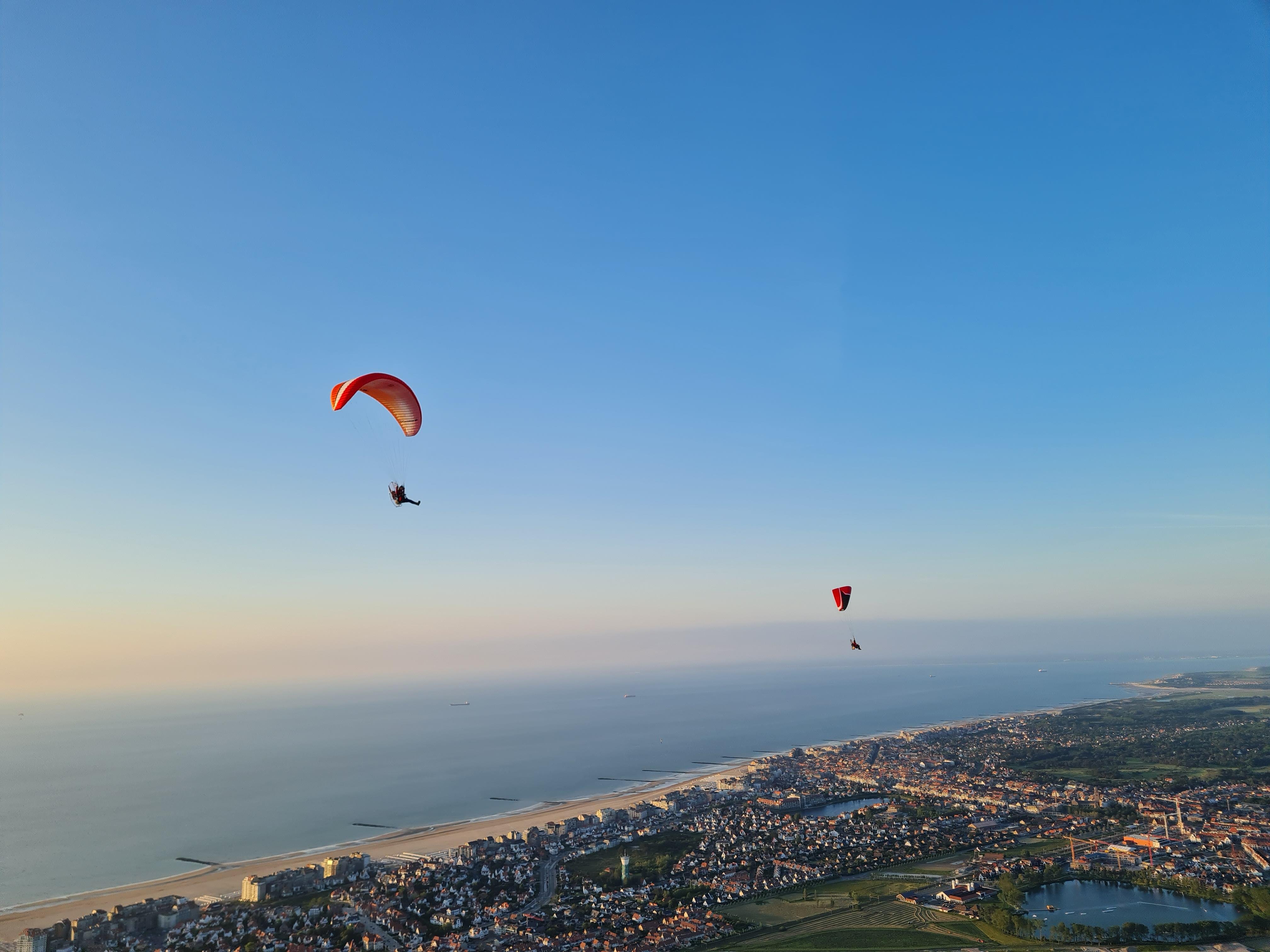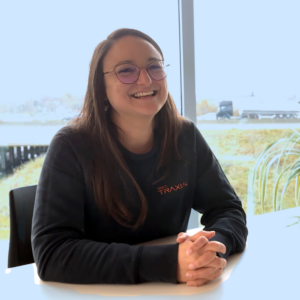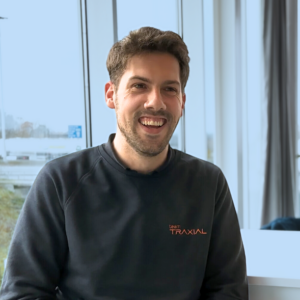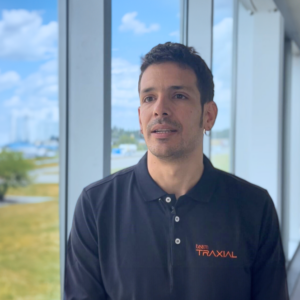Meet Aurélie, one of our Materials Engineers here in Traxial. In this video, she highlights…
Meet Jasper, Senior Innovation Engineer at Traxial
As a kid, Jasper always wanted to be an inventor. He grew up experimenting by creating model rockets, RC airplanes, and hovercrafts. If you asked his neighbors, they’ll probably tell you not all of his projects were equally successful. But he loved it and still does. Today he’s one of Traxial’s senior innovation engineers.
How did you end up at Traxial?
I joined Traxial back in 2018 as the first employee. In that sense, I’m one of the “oldies”, even though it’s only been 3 years. I was closely involved in several of the (r)evolutions we’ve been through: the steep growth of our team but also the decision to pivot the business towards ground e-mobility instead of renewables (wind turbine generators).
Working at a start-up company where the sky is the limit was a huge change compared to the corporate environment I had previously worked in. As the sidekick of Peter, our CTO, my first project consisted of drawing wind turbine generators in various dimensions. Peter then took care of the simulations.
What does your role entail?
I’ve always focused on the mechanical aspect of the motor. I use the word “focus”, but my job actually entails a range of responsibilities from brainstorming new concepts to ensuring smooth production by double-checking incoming components. These components are often manufactured based on the technical drawings our team provided to suppliers.
I need this variety. It’s in my nature. At the beginning of the week, my team leader asks me what I have planned. We discuss the topics I come up with and agree on the priority of them. Sometimes a topic is added or removed but he leaves room for flexibility. However, there are people in my team that prefer to have a fixed plan and that’s fine too. There are different paths to reach the same goal.
I like to be engaged in and collaborate with different business units, ranging from the simulation team to the marketing department – for example, I frequently prepare renders for commercial purposes. The size of our company allows for this kind of interaction. Have you ever met an inventor that’s not curious all the time?
How different is working at Magnax from other companies?
I’m always excited to tell people that I work at Magnax. You might think that goes without saying, given the nature of the product we’re creating. However, there’s more to it.
We have an open culture where everyone’s opinion is valuable. There’s room for trial and error and if problems occur, they’re quickly escalated to discuss openly. It’s also in the simple things, like having lunch together with the managers and our CEO, or having a drink on Friday afternoon. They’re not stuck in some ivory tower but accessible to anyone and open to suggestions and feedback.
What’s on your bucket list?
I’d like to build an electric motor to one day power my paramotor. It will need to be air-cooled as the entire package attached to your back cannot exceed 25 kilograms. Powered paragliding is my ultimate experience of freedom. It’s an inexpensive way of flying and barely involves any regulation. Last summer my friends and I took the car and drove our paramotors to France’s Vosges region. A silent electric motor would make it even more breathtaking.

Jasper during one of his flights to the Belgian coast.
Eager to become Jasper’s colleague? We have plenty of job openings at www.traxial.com/careers


